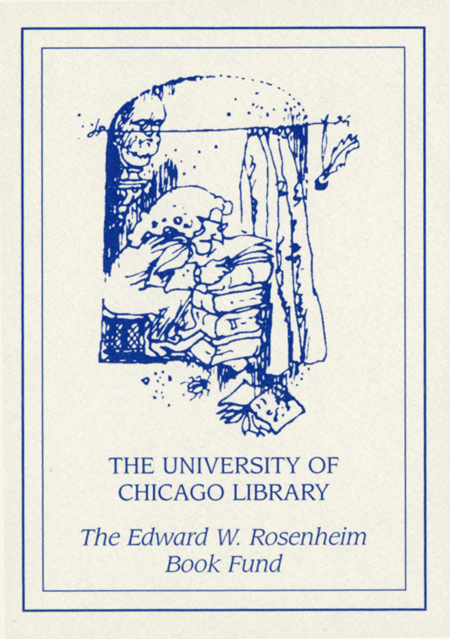Blood and home in early modern drama : domestic identity on the renaissance stage /
Saved in:
| Author / Creator: | Balizet, Ariane M., author. |
|---|---|
| Imprint: | New York : Routledge, 2014. |
| Description: | xii, 197 pages ; 24 cm. |
| Language: | English |
| Series: | Routledge Studies in Renaissance Literature and Culture ; 25 Routledge Studies in Renaissance literature and culture ; 25 |
| Subject: | |
| Format: | Print Book |
| URL for this record: | http://pi.lib.uchicago.edu/1001/cat/bib/10087472 |
MARC
| LEADER | 00000cam a2200000 i 4500 | ||
|---|---|---|---|
| 001 | 10087472 | ||
| 003 | ICU | ||
| 005 | 20211220151910.6 | ||
| 008 | 140122s2014 nyu b 001 0 eng | ||
| 010 | |a 2013047317 | ||
| 020 | |a 9780415720656 (hbk) | ||
| 020 | |a 0415720656 (hbk) | ||
| 020 | |z 9781315866857 (ebk) | ||
| 035 | |a (OCoLC)864662446 | ||
| 040 | |a DLC |b eng |e rda |c DLC |d YDXCP |d BTCTA |d ERASA |d UKMGB |d CDX | ||
| 042 | |a pcc | ||
| 043 | |a e-uk-en | ||
| 050 | 0 | 0 | |a PR658.D65 |b B35 2014 |
| 082 | 0 | 0 | |a 822/.309355 |2 23 |
| 084 | |a LIT000000 |2 bisacsh | ||
| 100 | 1 | |a Balizet, Ariane M., |e author. |1 http://viaf.org/viaf/307424862 |0 http://id.loc.gov/authorities/names/n2014003912 | |
| 245 | 1 | 0 | |a Blood and home in early modern drama : |b domestic identity on the renaissance stage / |c Ariane M. Balizet. |
| 264 | 1 | |a New York : |b Routledge, |c 2014. | |
| 300 | |a xii, 197 pages ; |c 24 cm. | ||
| 336 | |a text |2 rdacontent |0 http://id.loc.gov/vocabulary/contentTypes/txt | ||
| 337 | |a unmediated |2 rdamedia |0 http://id.loc.gov/vocabulary/mediaTypes/n | ||
| 338 | |a volume |2 rdacarrier |0 http://id.loc.gov/vocabulary/carriers/nc | ||
| 490 | 1 | |a Routledge Studies in Renaissance Literature and Culture ; |v 25 | |
| 830 | 0 | |a Routledge Studies in Renaissance literature and culture ; |v 25 | |
| 504 | |a Includes bibliographical references (pages 179-190) and index. | ||
| 520 | |a "In this volume, the author argues that blood was, crucially, a means by which dramatists negotiated shifting contours of domesticity in 16th and 17th century England. Early modern English drama vividly addressed contemporary debates over an expanding idea of "the domestic," which encompassed the domus as well as sex, parenthood, household order, the relationship between home and state, and the connections between family honor and national identity. The author contends that the domestic ideology expressed by theatrical depictions of marriage and household order is one built on the simultaneous familiarity and violence inherent to blood. The theatrical relation between blood and home is far more intricate than the idealized language of the familial bloodline; the home was itself a bloody place, with domestic bloodstains signifying a range of experiences including religious worship, sex, murder, birth, healing, and holy justice. Focusing on four bleeding figure -- the Bleeding Bride, Bleeding Husband, Bleeding Child, and Bleeding Patient -- the author argues that the household blood of the early modern stage not only expressed the violence and conflict occasioned by domestic ideology, but also established the home as a site that alternately reified and challenged patriarchal authority"-- |c Provided by publisher. | ||
| 648 | 7 | |a 1500-1600 |2 fast | |
| 650 | 0 | |a English drama |y Early modern and Elizabethan, 1500-1600 |x History and criticism. |0 http://id.loc.gov/authorities/subjects/sh2008103081 | |
| 650 | 0 | |a Domestic drama, English |x History and criticism. |0 http://id.loc.gov/authorities/subjects/sh2008102362 | |
| 650 | 0 | |a Blood in literature. |0 http://id.loc.gov/authorities/subjects/sh94000700 | |
| 650 | 0 | |a Families in literature. |0 http://id.loc.gov/authorities/subjects/sh85047051 | |
| 650 | 7 | |a LITERARY CRITICISM / General. |2 bisacsh | |
| 650 | 7 | |a Blood in literature. |2 fast |0 http://id.worldcat.org/fast/fst00834758 | |
| 650 | 7 | |a Domestic drama, English. |2 fast |0 http://id.worldcat.org/fast/fst00896605 | |
| 650 | 7 | |a English drama |x Early modern and Elizabethan. |2 fast |0 http://id.worldcat.org/fast/fst01710950 | |
| 650 | 7 | |a Families in literature. |2 fast |0 http://id.worldcat.org/fast/fst00920365 | |
| 655 | 7 | |a Criticism, interpretation, etc. |2 fast |0 http://id.worldcat.org/fast/fst01411635 | |
| 903 | |a HeVa | ||
| 929 | |a cat | ||
| 999 | f | f | |i be0a859d-c3b8-5336-bbca-8b49f70ce2a5 |s 2e7959b9-8771-5847-8d7d-ffa0ea038b3c |
| 928 | |t Library of Congress classification |a PR658.D65B35 2014 |l JRL |c JRL-Gen |i 8206154 | ||
| 927 | |t Library of Congress classification |a PR658.D65B35 2014 |l JRL |c JRL-Gen |e EDRO |b 110186760 |i 9358200 | ||

